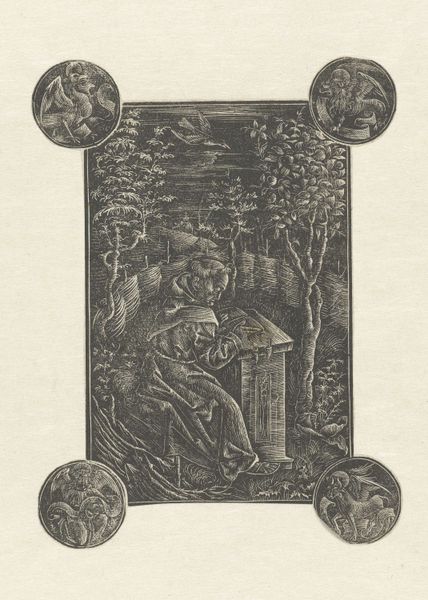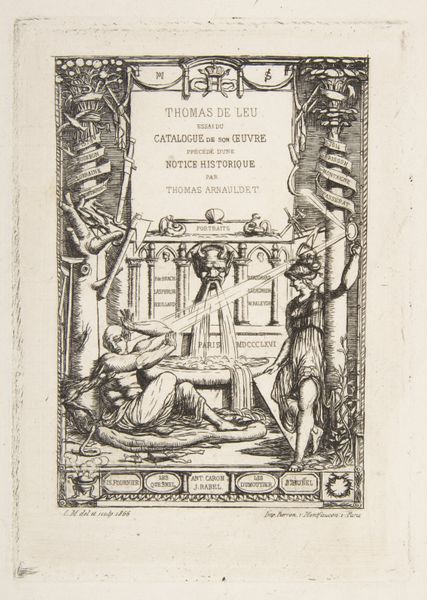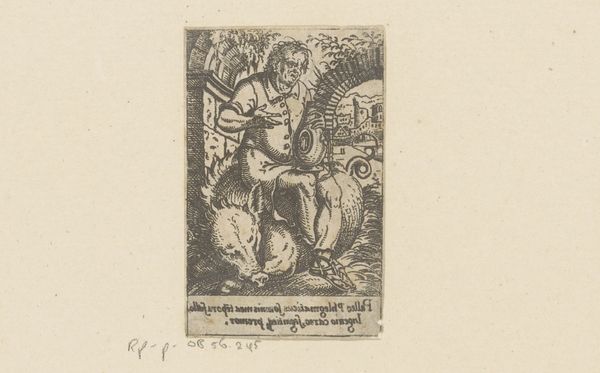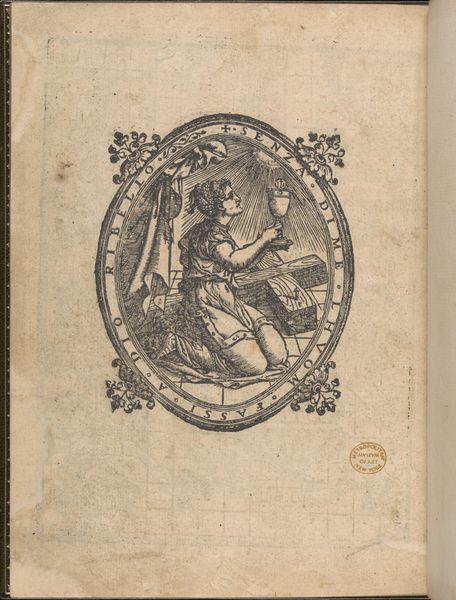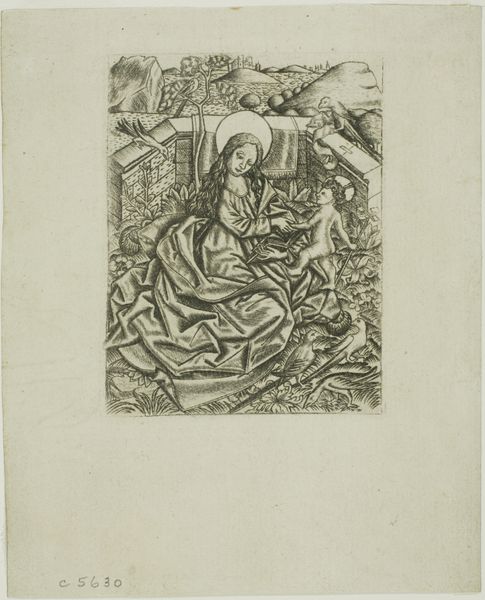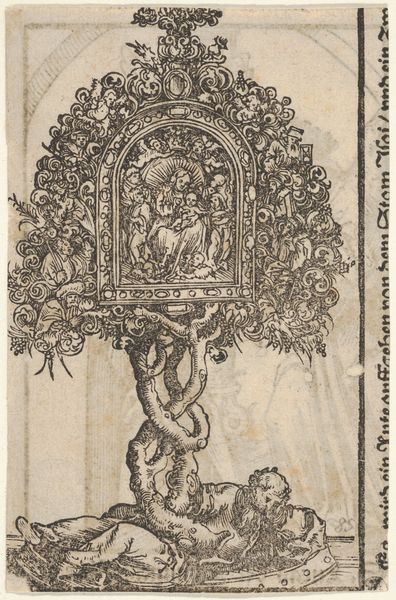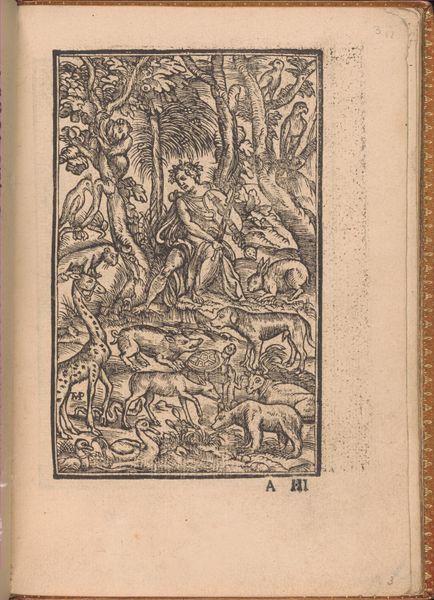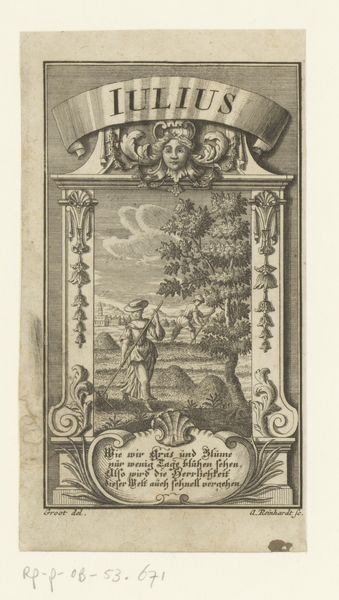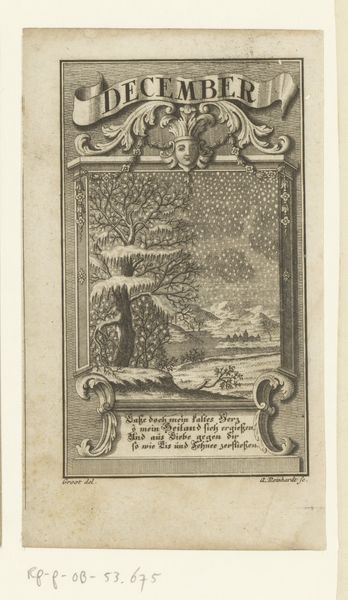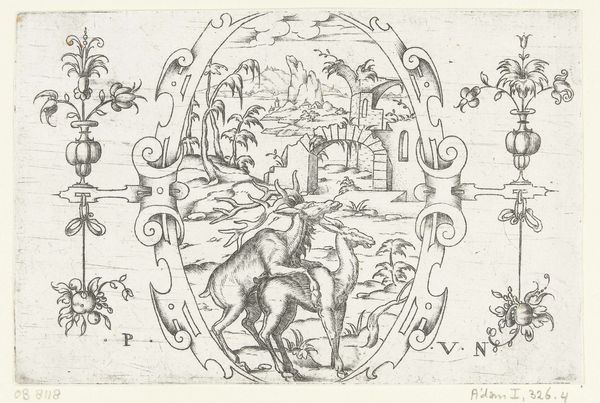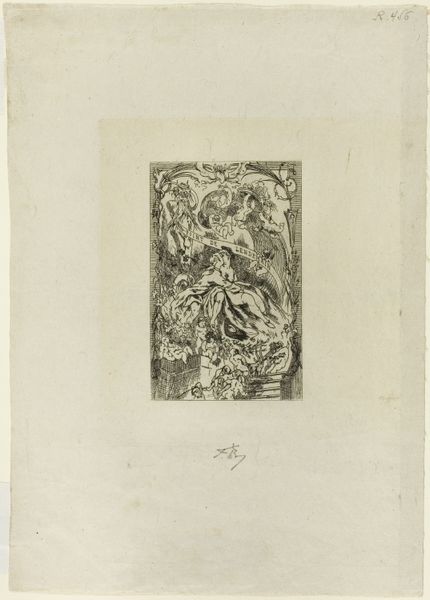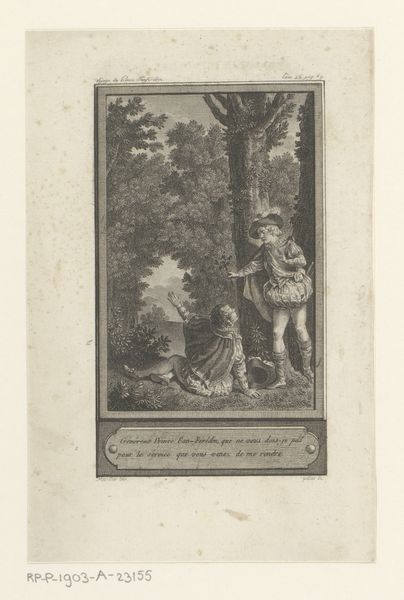
print, woodcut
# print
#
landscape
#
figuration
#
woodcut
#
line
#
northern-renaissance
Dimensions: sheet: 24.5 x 17.3 cm (9 5/8 x 6 13/16 in.)
Copyright: National Gallery of Art: CC0 1.0
Editor: Here we have a woodcut print titled "Franciscan, Pelbartus of Temesvar, in a Garden," made around 1500. I find the high contrast of the black lines against the light background creates an almost otherworldly, contemplative atmosphere. What aspects of this work strike you most? Curator: It’s fascinating how this seemingly simple woodcut embodies the intersection of religious devotion, burgeoning print culture, and evolving social roles. Consider that this image circulated during a period of increasing literacy and the rise of the printing press. Its impact lies not just in its visual representation of Pelbartus, but its contribution to the dissemination of religious thought. How might its existence as a print, accessible to a wider audience, shape the understanding and influence of figures like Pelbartus of Temesvar? Editor: That's interesting. So it's less about *what* it depicts and more about *how* that depiction reached people? Curator: Precisely. Before mass production, access to images and texts was a privilege. The woodcut democratized knowledge and imagery. Its relatively simple aesthetic stems from its printing limitations, a fascinating parallel to the subject: Franciscan simplicity and accessibility to the common person. How would it feel to see this not in a museum, but instead pinned to the door of your house or in your small religious pamphlet? Editor: So the choice of woodcut becomes almost as meaningful as the depiction of the Franciscan friar! I never thought about it that way. Curator: Think also about the institutional influence; Franciscan values and imagery entering popular visual culture through the machinery of print. Now, given the placement of similar prints and pamphlets during the Reformation and other key turning points in this period, what role could this print have played in the wider discussions of its day? Editor: Wow, it really makes you reconsider the power dynamics at play, and this one seemingly simple image suddenly holds a lot more historical and cultural significance.
Comments
No comments
Be the first to comment and join the conversation on the ultimate creative platform.
